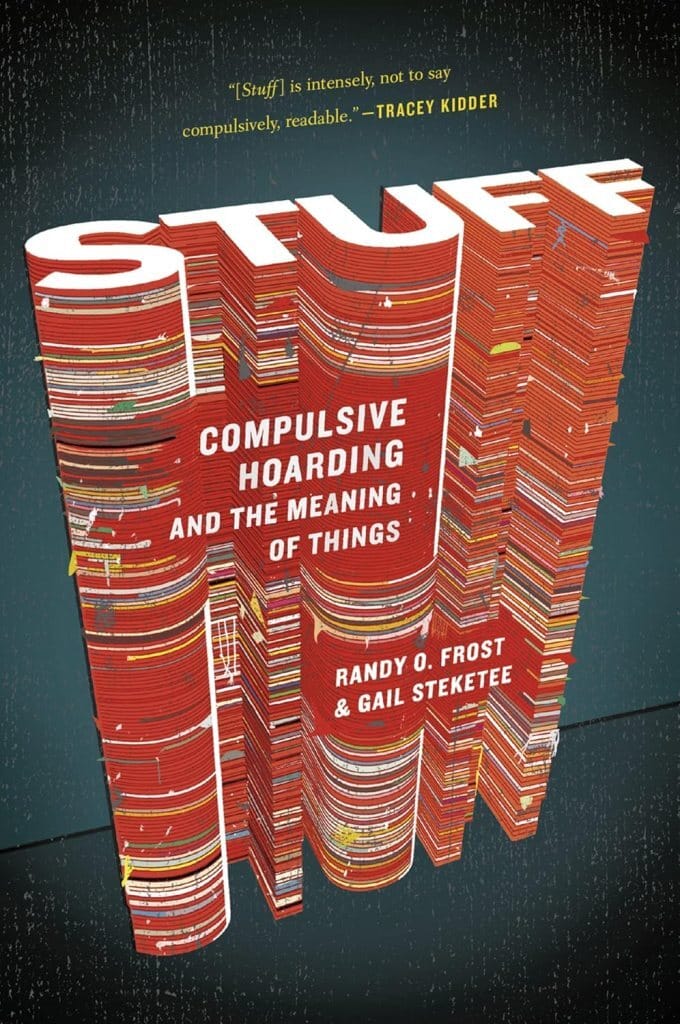- Ark's Newsletter
- Posts
- Inside the Mind of a Hoarder: The Shocking Psychology You Never Knew
Inside the Mind of a Hoarder: The Shocking Psychology You Never Knew
From emotional trauma to obsessive control—we uncover the real reasons why some people just can’t let go.

Understanding Hoarding Disorder: A Compassionate Look Inside
Hoarding disorder affects an estimated 2 to 5% of the population, or roughly one in 20 to 50 people, often manifesting in older adults who live alone. While many are familiar with the term “hoarding,” the underlying reasons and complexities of this mental health condition are less understood. Through personal stories and expert insights, we can gain a deeper understanding of hoarding disorder and how to approach it with compassion.

A Glimpse Inside the Homes
In Hennepin County, Minnesota, images of homes reveal the physical reality of hoarding: items stacked high, covering floors, blocking pathways, and overtaking living spaces. In one home, belongings pile up on dressers, leaving just enough room for a bed. These scenes reflect the challenges faced by individuals like Dawn, who invited reporters into her Minneapolis home to share her story.
Dawn described her home as a “prison,” where the clutter leaves her feeling paralyzed. “I become paralyzed with picking up and sorting out what to do,” she said. Her struggle with organization and clutter began in childhood, rooted in trauma, and has been compounded by extreme anxiety and depression. For Dawn, her belongings carry deep personal significance. “I felt like I needed to be the personal historian of me,” she explained. “How will the world ever know that I was here?”

The Mental Health Connection
Hoarding is not simply a matter of disorganization or laziness—it is a recognized mental illness. Wade Crandall, clinical site director at Nystrom and Associates in Hugo, Minnesota, and a member of the Minnesota Hoarding Task Force, explains that hoarding often coexists with conditions like depression, anxiety, or obsessive-compulsive disorder (OCD). “A lot of times with hoarding, you’re also going to see depression, anxiety, and sometimes OCD,” Crandall said.
The behavior can stem from various triggers, such as trauma, grief, or unrecognized losses—like the loss of a job or social status—that society may not acknowledge. For some, holding onto items becomes a way to cope with these experiences. In Dawn’s case, the isolation of the COVID-19 pandemic exacerbated her condition, leading to an obsession with collecting Barbie items as a “survival mechanism.” She created scenarios with the dolls, which became a substitute for family during a time of intense loneliness.

Levels of Hoarding
Hoarding exists on a spectrum, ranging from mild clutter to severe, hazardous conditions. Crandall outlines the levels:
Level 1: Common clutter, manageable and not significantly disruptive.
Level 2: Mild to moderate hoarding, with noticeable accumulation.
Level 3: Moderate hoarding, where clutter begins to impair functionality.
Levels 4 and 5: Severe hoarding, characterized by large piles, blocked doors, and potential biohazards like rotting food or pest infestations.
At higher levels, homes may become unsafe, prompting intervention from first responders or environmental health inspectors like Joe Jurisic, who works in Hennepin County. Jurisic often receives calls from first responders about hoarded homes and takes a compassionate approach to enforcement. “I find it better to work with them and to have them understand why I want them to clean the house,” he said, noting that these items are often “people’s treasures.”
The Impact of the Pandemic
The COVID-19 pandemic worsened hoarding behaviors for many. Isolation, avoidance, and eviction moratoriums allowed clutter to accumulate unchecked in some cases. Dawn, for example, found her condition intensified while working from home, leading to increased online purchases. This period of isolation underscored the importance of social connection and support for those with hoarding disorder.
Supporting Loved Ones
Helping someone with hoarding disorder requires patience and empathy. Crandall advises against forced cleanouts, which can be traumatic, as individuals often tie their identity to their possessions. Instead, he recommends being an “open door” for loved ones—expressing concern calmly and offering support when they’re ready to address the issue. Statements like “just clean it up” or offering a storage unit can be harmful, as they fail to address the root causes and may shift the problem elsewhere.
For Dawn, progress came through hiring a professional organizer to create a safer, more functional living space. One of her goals is to ensure there’s enough room for emergency crews to enter her home if needed. She hopes that by sharing her story, others will feel less alone. “It’s not a choice. It’s not something to be ashamed of,” she said.
Resources and Hope
Hoarding disorder is complex, with no quick fix, but support is available. The Minnesota Hoarding Task Force offers online resources for those affected and their families. Professional organizers, therapists, and compassionate interventions from community services can make a difference. Success stories, like those shown in before-and-after photos of transformed homes, highlight the potential for change.
By fostering understanding and reducing stigma, we can help those with hoarding disorder feel supported rather than judged. As Dawn’s story shows, opening the door to conversation is a vital first step toward healing.
For more information, visit the Minnesota Hoarding Task Force resources at wcco.com/links.
